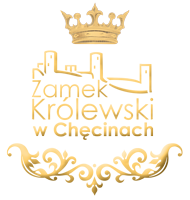You are at the entrance to the Grand House. It was most likely built in the Jagiellonian era and mainly fulfilled representative and residential functions. It was a two-storey building, located on the northern wall, single-storey and basement.
Today, only its relics have been preserved, in particular the cellar rooms where food products such as oats and wine were once stored. In the old days there were among others administrative office and a chamber in the rooms of the House, dedicated to the magistrates’ court. Impressive was the representative part of the building, where in one of the halls, on the ceiling were placed images of Polish rulers, for example Boleslaus III the Wrymouth or Casimir II the Just.
No wonder that kings and queens were so eager to stay here! Everything was connected by a network of corridors, and from the upper floors of the House you could safely move around the castle with wooden porches. In the place of today's Lovers Lane, most likely, for some time there was also a kitchen, which provided the inhabitants with food. Live, do not die! Currently, in the remains of the Grand House we can find a lapidarium with architectural elements of the castle and temporary exhibitions related to the history of the fortress.














